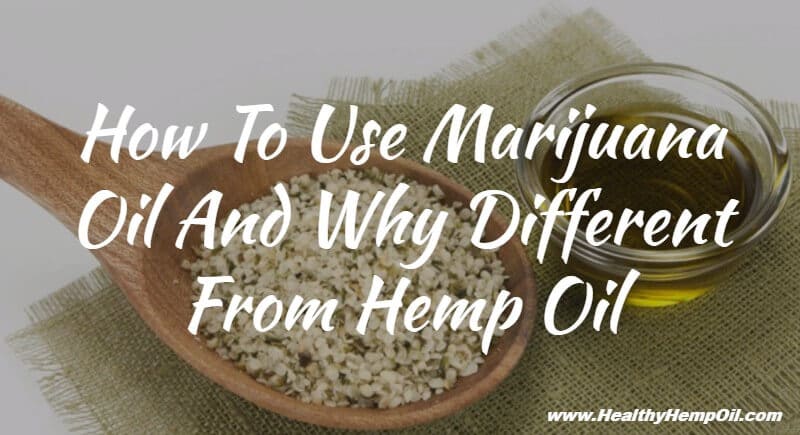Education
How To Use Marijuana Oil And Why It’s Different From Hemp Oil
As the legalization of marijuana for both medical and recreational use continues to sweep the country by storm, the methods of using marijuana have definitely come a long way. Where smoking has long been the preferred method of consuming marijuana, it seems that these days, people have quite a few more options.
Marijuana oil has become one of the most popular ways to use marijuana with more people being turned on to oil rather than the traditional flowers. For those new to marijuana or those who are familiar with smoking the flower (or bud) of the marijuana plant, knowing how to use marijuana oil can seem a little complicated.
Before You Learn How to Use Marijuana Oil, Know the Difference Between Hemp Oil and Marijuana Oil
It can be difficult to discern the difference between hemp and marijuana oil. And it’s important (especially if you’re new to medical cannabis) to know the difference between the two before you learn just how to use marijuana oil. Knowing the difference will ensure that you’re using it for exactly what you need, and it will give you the most optimal effect.
It’s important not to be misled about the intended uses for the marijuana oil you choose to use. Hemp oil and marijuana oil are two different substances entirely, and it’s important to know what you’re getting into prior to consumption. For all practical purposes, the hemp plant and the cannabis plant are very different indeed.
Marijuana Oil vs. Hemp Oil
There’s often some confusion between hemp oil vs cannabis oil. Both come from the cannabis sativa plant, but the biology of the two are decidedly different. While both plants contain compounds known as cannabinoids, marijuana contains the most well-known cannabinoid, THC (responsible for the “high” most people associate with cannabis in general) while hemp contains large amounts of CBD (also known as cannabidiol, which contains no psychoactive effects).
When made into an oil (whether it’s hemp or marijuana oil), the compounds stay intact. And it’s the compounds contained in the plant that mark the only difference between marijuana and hemp at all. The single most distinguishing feature between marijuana and hemp oil is the amount of THC contained in each.
Hemp oil contains very little THC. For an oil to be considered hemp, it must contain less than 0.3% THC. Marijuana oil, on the other hand, contains higher doses of THC oil and causes the high most people associate with marijuana. Marijuana oil generally contains 5-20% THC and has a higher ratio of THC than CBD.
Interestingly enough, the high amounts of CBD contained in hemp oil have been shown to possibly counteract the psychoactive effects of THC. For instance, if someone’s consumed “too much” high-THC marijuana oil, a hemp oil could potentially reduce the effects.
How to Use Marijuana Oil Effectively
Knowing the difference between marijuana oil and hemp oil will make a huge difference when it comes time to safely consume marijuana oil. Many medical cannabis patients (and recreational marijuana smokers) are turning to marijuana as an alternative to consume their cannabis.
Marijuana oil is traditionally ingested using what’s known as a vape pen. Although subject to the quality of marijuana oil that you’re consuming, a vape pen provides a substitute to inhaling the smoke from cannabis flower.
If smoking isn’t your thing, you’re in luck. A vape pen is only one of the methods of consumption when it comes to enjoying marijuana oil. You can choose to use a variety of different products that are infused with marijuana oil including sprays, lozenges, capsules, edibles, and more. Finding out how to use marijuana oil in the right context for you will be widely dependent on what method you prefer.
How to Use Marijuana Oil…And Find the Right Serving
For those considering learning how to use marijuana oil, finding the right serving is critical. The right amount of oil to use is going to depend on the person using it as well as the condition being addressed. Someone’s sensitivity to THC is a big determining factor on how much should be taken. Too much THC can cause negative feelings in those sensitive to it while too little THC may not offer the desired effects. Cannabis dosing is serious business, and it’s important to know just how much (or how little) to take.
It’s best to begin with low amounts of marijuana oil, especially if you have little past experience with cannabis. Rather than taking one big one, it’s better to take smaller amounts throughout the day to gauge where your comfort level is in using marijuana oil for the first time. When you find a comfortable serving, stick with it for the first few times or until you’re ready for a heavier-hitting effect.
What Side Effects Should You Be Aware of When Learning How to Use Marijuana Oil?
A smart thing to do when learning how to use marijuana oil is to remember that less really is more. Marijuana oil can be very beneficial, but if too much is taken, that can affect the desire to try it again. It’s also wise to make yourself aware of the possible side effects associated with cannabis and marijuana oil.
Cannabis has proven to be an effective way to alleviate a number of different conditions. Depending on the dosage and one’s sensitivity to THC, it can provoke and intensify underlying anxiety or other mood maladies. Additional side effects can include dizziness and dry mouth, and it can make some people feel lightheaded.
Cannabis oil is one of the most effective ways to consume cannabis and is gaining in popularity with monumental speed. Do you have experience on how to use marijuana oil that you’ve found to be particularly beneficial? What is your favorite way to use marijuana oil? We’d love to hear about it in the comments below!
FDA Disclaimer: These statements have not been evaluated by the Food and Drug Administration. Products sold by Healthy Hemp Oil are not intended to diagnose, treat, cure, or prevent any disease. The information on our website is intended to provide general information regarding our products and is not to be construed as medical advice or instruction. Read more

